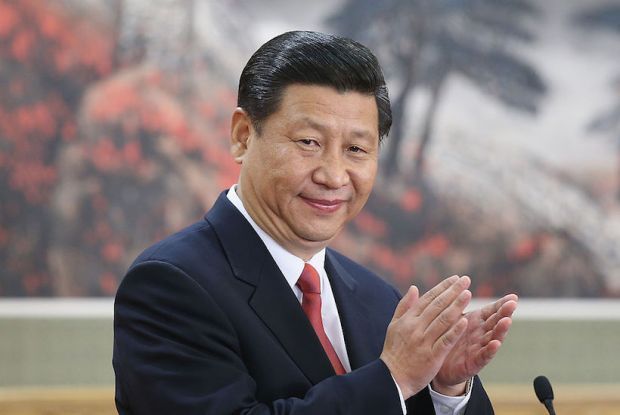Aukus is out of the bag. The Albanese government has committed Australia to spend nearly $370 billion over the next three decades to acquire eight nuclear submarines. Given the recent history of government project budget blowouts and the propensity for scope creep, (think NDIS, Snowy 2.0, NBN), chances are high that this amount will be the sub-floor and not the ceiling. This is particularly true, as it is unclear whether the government’s estimates include the cost of the missiles and munitions necessary to obtain the full strategic benefits of nuclear-powered submarines.
All eyes have now focused on Treasurer Jim Chalmers and Finance Minister Katy Gallagher to find the money to pay the bills. Granted, these costs will run for decades, and well beyond the term of this government. That said, it is important that the Commonwealth budget and economy are prepared for this new and significant overhead. Given the size and bloat of the current Commonwealth budget, a recalibration is essential before the Aukus bills start arriving.
Speculation has already commenced from where will come the financial resources necessary to pay for the Aukus submarines. The starting position is unfortunately and as usual, to increase taxes: whether directly through rate increases or indirectly through reduced tax expenditures and bracket creep. The government’s recently announced superannuation tax changes should be a warning to all Australians of what may lie ahead.
Whilst there is valid underlying policy rationale for changes to superannuation taxes, the mechanism the government has chosen to implement its changes is of great concern. By doubling the tax rate for high-balance superannuants, the government is making a significant architectural change to the Australian taxation system. This change is, for all intents and purposes, a wealth tax whereby an individual’s superannuation tax rate and liability will no longer be determined by income alone. Post-change, tax liability will be a function of income and assets. Your tax rate will be determined by how wealthy you are. And although it is currently proposed to be limited to the superannuation realm, once the regulatory and accounting systems have been developed, it will always be an option for future Treasurers to extend to other realms.
For example, using this framework of individual tax rates determined by asset wealth, a future Treasurer could determine that personal tax rates be linked to the value of the family home. Such a mechanism could also surreptitiously add the ‘own home’ to the pension assets test. Perhaps this is why Treasurer Chalmers was cautious in his language when asked about the prospects of taxing the family home. Consider further the Commonwealth-State tax relations interplay if there is ever a change from property stamp duty to a perpetual land tax.
The greater issue for the government and Treasury is that the economy and budget are at operating at near best-case settings. Unemployment is low, keeping income tax receipts high and unemployment benefit payments low. Commodity prices are at record levels and company profits are similarly strong keeping royalty and company tax receipts high. The bias is to the downside, particularly in our high inflation environment, with increasing interest rates likely to lead to a slowing economy, higher unemployment, and lower company profits. This will only exacerbate the budget deficit, even before the first Aukus payment.
Increasing tax rates in this environment would be counterproductive. It may generate additional near-term tax receipts but at the expense of economic growth. This is because individuals and businesses will change their behaviours due to the disincentive effects of increased rates. Further, increasing Australia’s already comparatively high tax rates with increasing energy costs can only further adversely impact Australia’s productivity and international competitiveness. A further assault on Australia’s aggregate supply.
The government may also be tempted to take a budgetary sugar hit and significantly increase immigration so to generate aggregate growth and tax revenues. But this too will only exacerbate long-term budget problems because new immigrants will eventually retire and require government benefits. Not to mention the social and downstream costs of overcrowded schools, hospitals, and roads. And of course, the increased aggregate national carbon emissions from a larger population.
The safest and proven solution available to the government if it wants to balance the budget and pay for Aukus is to pursue pro-growth and productivity policies, particularly through spending and regulatory reform.
Recently Gary Banks, the founding Chairman of the Productivity Commission, described some of the contra-productivity and contra-growth policies pursued by Australian governments over the past 20 years. Our current inflation environment has limited the ability of the RBA to underwrite the policy folly of Australian governments leaving only the growth and productivity playbook. The playbook was well utilised by the Hawke, Keating, and Walsh economic team of the 1980s.
In his writings, Karl Marx described religion as the ‘opiate of the masses’. Were Marx were alive today, he could describe government spending and regulation as the opiate. And like all addictive narcotics, excessive consumption will only lead to bad outcomes. In the case of recent excessive government spending and regulation, it has led to inflation and dampened economy.
There is ample opportunity for the government to finance Aukus without increasing taxes. $14 billion of combined annual waste and fraud within NDIS and Medicare has recently been highlighted. No doubt other savings opportunities exist within the Commonwealth Government’s $650 billion and rapidly growing annual budget. The Productivity Commission recently made more than 70 recommendations to increase national productivity. Perhaps these areas are thoroughly explored before further burdening Australian businesses and households.
Prior to the 2022 election, candidate Anthony Albanese said: ‘If Labor is successful in the coming federal election, I will take my lead from Bob Hawke and his successor Paul Keating.’ The Hawke government financed a social wage and balanced the budget through spending, productivity, and regulatory reform, and as a consequence, Australia was set on course for thirty years of prosperity through a focus on growing rather than redistributing the economic pie. The playbook is available to you Mr Albanese. Just call the plays.
























